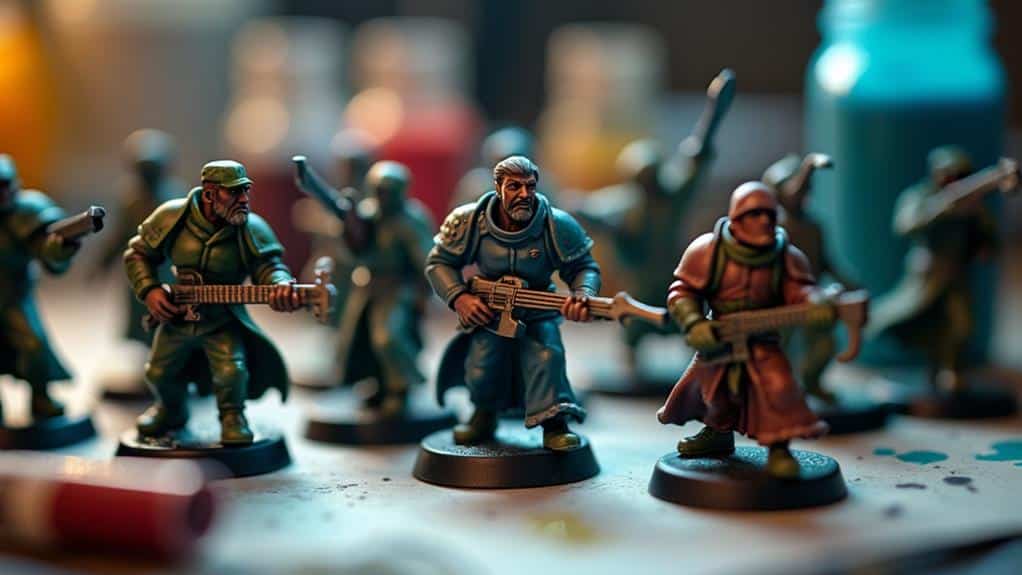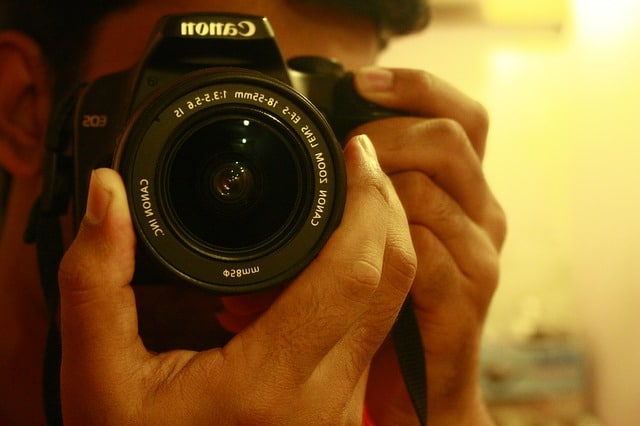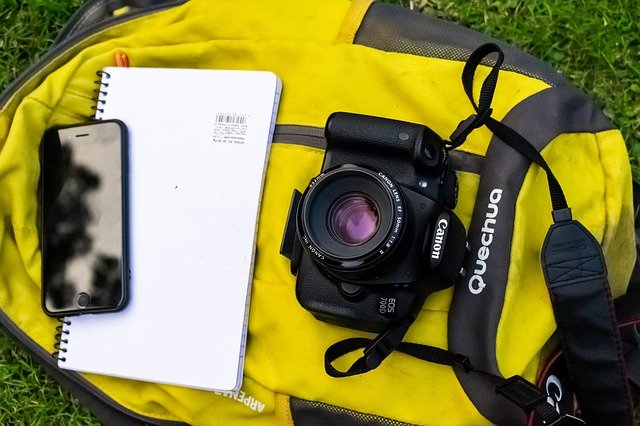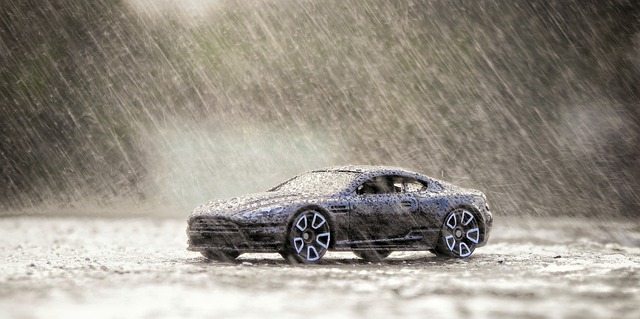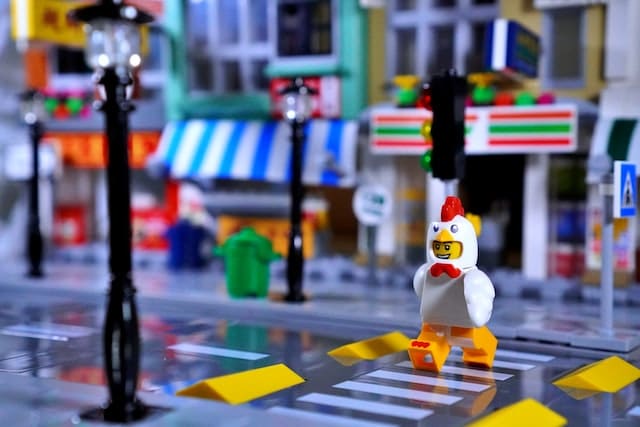Capturing the essence of your mini heroes through figure portrait techniques begins with mastering the art of lighting. You'll need to identify the primary light source and strategically position it to cast shadows that enhance the figure's features. Experimenting with different angles and intensities can dramatically affect the outcome. Natural light, such as the golden hour or window light, offers stunning effects, while artificial options like LED lights provide versatility. But what about those subtle touches that truly bring your figures to life? To uncover these secrets, let's explore how reflectors and diffusers can refine your lighting setup.
Key Takeaways
- Position the light source to cast shadows that define and enhance the figure's features.
- Experiment with backlighting to create a striking halo effect around the figure.
- Use reflectors to bounce light back onto the figure, enhancing details and reducing shadows.
- Utilize softboxes and diffusers to achieve a soft, natural glow without harsh shadows.
- Capture figure portraits during golden hour for naturally flattering light and depth.
Understanding Light Sources
Understanding light sources is essential for mastering figure portrait techniques. When you're aware of how light interacts with your figures, you can create depth, mood, and realism in your portraits. Start by identifying your primary light source. This could be a lamp, flashlight, or any other controllable light. Position it to cast shadows that define the figure's features.
Next, consider the angle and intensity of your light. A light placed directly above your figure might create dramatic shadows, enhancing the contours and giving a more dynamic look. Conversely, side lighting can highlight textures and add depth. Don't forget to experiment with different light positions to see how they affect your figure's appearance. Adjusting the position and angle of the light can control the direction of shadows cast by the toys.
You should also pay attention to the color temperature of your light source. Warm lights (yellowish) can create a soft, inviting atmosphere, while cool lights (bluish) might make your figure appear more stark and sharp. Mixing light sources with different temperatures can add a unique dimension to your portraits
Natural Light Techniques
To master natural light techniques in figure portraiture, start by exploring the magic of the golden hour. During this time, the light is soft and warm, casting flattering tones on your subject. Consider taking multiple shots of your toy from different angles to find the best fit, as suggested in creating a story through toy photography. Use window light to create dramatic effects, manipulating shadows and highlights to add depth. These methods will help you capture stunning, natural portraits without the need for artificial lighting
Golden Hour Magic
Golden hour, that precious window of time just after sunrise or before sunset, offers an unparalleled opportunity for capturing stunning figure portraits bathed in natural light. The soft, warm hues cast during this time create a magical atmosphere, perfect for highlighting the intricate details of your mini heroes.
To make the most of this golden opportunity, position your figures so the light falls gently on them, creating a natural gradient of shadows and highlights. Backlighting can also be incredibly effective, giving your figures a glowing outline that emphasizes their form and features without harsh contrasts.
Experiment with different angles to find the most flattering light. A slight tilt or rotation of your figure can dramatically change the mood of the portrait. Capture the subtle nuances of the light as it changes, and you'll find that even the smallest adjustments can make a significant difference.
Window Light Mastery
Harnessing the power of window light can elevate your figure portraits to a whole new level. Natural light provides a soft, flattering illumination that's perfect for bringing out details and textures in your mini heroes. Position your figures near a window where light filters in gently, avoiding direct sunlight that can create harsh shadows and highlights.
Use a white reflector or a piece of white paper to bounce light back onto the shadowed side of your figure, balancing the exposure. Experiment with different times of day to see how the changing light affects your composition. Morning and late afternoon often yield the best results, offering a warmer, softer glow.
Don't be afraid to move your figure around to find the best angles. Sometimes, a slight shift in position can make a significant difference. If you find the light too intense, diffuse it with a sheer curtain or a piece of frosted plastic. This will soften the light and reduce any unwanted glare.
Artificial Light Options
When it comes to figure portrait techniques, selecting the right artificial light options can make all the difference. You've got several choices, but crucial to understand how each one affects your mini heroes. LED lights are a popular option due to their versatility and energy efficiency. They offer a consistent light source without generating much heat, which is perfect for long photo sessions. Additionally, adjustable brightness and color temperature are key features of LED lights, providing you with the flexibility to fine-tune your lighting setup.
Next, consider ring lights. They provide a soft, even illumination that reduces shadows and highlights details. This can be especially useful for capturing the intricate features of miniature figures. Ring lights are also adjustable, allowing you to control the brightness and color temperature to suit your needs.
Softbox lights are another excellent choice. These lights diffuse light through a fabric cover, creating a natural, soft glow that mimics daylight. This helps to eliminate harsh shadows and evenly illuminate your subject. Softboxes come in various sizes, so you can choose one that fits your shooting space.
Using Reflectors
Using reflectors can dramatically improve your figure portraits by enhancing lighting. You'll need to understand the types of reflectors available, how to place them ideally, and some DIY options that are both cost-effective and easy to create. Let's explore how these tools can elevate your photography. Reflectors can be particularly useful when paired with softbox lights, which provide soft, diffused light for reducing shadows and hotspots. Additionally, experimenting with different lighting setups and angles can help you achieve more creative effects
Types of Reflectors
Reflectors are indispensable tools in figure portrait photography, allowing photographers to manipulate light to achieve the desired effect. They come in various types, each serving a unique purpose. Understanding these options will help you choose the best reflector for your needs.
- White Reflectors: These provide a soft, natural light, perfect for filling in shadows without altering the color of your light source. They're great for beginners due to their forgiving nature.
- Silver Reflectors: If you need a brighter, more contrasty light, silver reflectors are your go-to. They reflect more light than white ones, making them ideal for dramatic effects or highlighting details.
- Gold Reflectors: For adding warmth to your scenes, gold reflectors are unmatched. They give a warm, golden hue to your light, perfect for creating a cozy, sunset-like atmosphere.
- Translucent Reflectors: These don't reflect light directly but diffuse it, softening harsh sunlight or studio lights. They're excellent for reducing shadows and evening out the light across your figure.
Choosing the right reflector can make a significant difference in your figure portraits. Experiment with different types to see which one best enhances your mini heroes under various lighting conditions.
Optimal Reflector Placement
Positioning your reflector correctly can dramatically enhance the quality of your figure portraits. The key is to understand how light interacts with your miniatures. Start by identifying your primary light source, whether it's natural sunlight or a lamp. Place the reflector opposite this light source to bounce light back onto the figure, filling in shadows and providing a more balanced illumination.
Experiment with different angles. Holding the reflector at a 45-degree angle to the figure often yields the best results, softening shadows without creating harsh highlights. If you're working with multiple light sources, use the reflector to control the intensity and direction of light. You can also try placing the reflector slightly below the figure to add a subtle, upward glow that accentuates details.
Don't forget to adjust the distance between the reflector and the figure. Bringing the reflector closer results in a stronger, more focused light, while moving it further away provides a softer, more diffused effect. Continuously tweak the position until you achieve the desired balance of light and shadow. This careful adjustment will bring out the intricate details and vibrant colors of your mini heroes, making them truly stand out.
DIY Reflector Ideas
When you're looking to elevate your figure portraits without breaking the bank, DIY reflectors can be a game-changer. Creating your own reflectors is easy, cost-effective, and can dramatically improve the lighting in your photos. Here's how you can make and use them:
- Aluminum Foil: Grab some cardboard and wrap it in aluminum foil, shiny side out. This makes a great reflector to bounce light onto your subject, creating a brighter and more balanced image.
- White Foam Board: A foam board from a craft store can serve as an excellent reflector. It's lightweight, easy to position, and provides a soft, even light that reduces harsh shadows.
- Reflective Car Sunshade: Those foldable car sunshades with a reflective surface work wonders too. They're portable and can reflect a large amount of light, making them perfect for larger setups.
- White Bed Sheet: If you need a big reflector, a white bed sheet will do the trick. Stretch it out on a frame or hang it up to bounce light effectively. It's particularly useful for larger scenes or group shots.
DIY reflectors let you control the light, enhancing your figure portraits beautifully. Try these simple ideas and watch your mini heroes shine!
Backlighting Effects
Backlighting effects can dramatically transform your figure portraits by creating a striking halo of light around the subject. This technique adds depth and dimension, making your mini heroes stand out against the background. To achieve this, place a light source directly behind your figure. It can be a lamp, LED, or even natural sunlight. Verify the light is strong enough to create that glowing outline without washing out the details of your figure.
Experiment with different intensities and angles. A lower angle can elongate shadows and add drama, while a higher angle might produce a softer glow. To control the backlight, use objects like pieces of paper or thin fabric to diffuse the light slightly, avoiding harsh lines.
Position your camera to capture the illuminated edges while keeping the subject's details clear. Adjust your camera settings; lower your ISO to prevent overexposure, and tweak the aperture to get a crisp focus on the figure.
Play with the distance between the light source and the figure to find the perfect balance. With practice, you'll master backlighting effects, giving your figure portraits a professional and dynamic look.
Softbox and Diffuser Use
Elevate your figure portraits by incorporating softboxes and diffusers, essential tools for achieving soft, even lighting. Softboxes help diffuse the light, reducing harsh shadows and creating a more flattering and natural look for your mini heroes. They spread the light over a larger area, making it softer and more even, which is perfect for highlighting the intricate details of your figures.
Diffusers work similarly by scattering light and minimizing harshness. They can be attached to various light sources like lamps or LED panels, offering you flexibility in your setup. By using both softboxes and diffusers, you can control the light intensity and direction, ensuring your figures look their best from every angle.
Here are some tips for effective use:
- Position your softbox at a 45-degree angle: This will create a natural, flattering light, highlighting the figure's details.
- Use multiple diffusers: Layering diffusers can soften the light even more, perfect for reducing any remaining shadows.
- Experiment with distances: Moving the softbox closer or further can change the light's softness and intensity.
- Combine with other lighting tools: Mix softboxes and diffusers with reflectors or fill lights to achieve balanced lighting.
Creative Shadows
Shadows can add depth and drama to your figure portraits, transforming them from simple captures to intriguing visual stories. By strategically using shadows, you can highlight specific features, create mood, and guide the viewer's eye to the most important parts of your scene.
Start by positioning your light source at different angles. Side lighting, for instance, can create long, dramatic shadows that highlight textures and contours, making your mini heroes appear more lifelike. Backlighting, on the other hand, casts shadows towards the viewer, adding a sense of mystery and depth.
Don't forget about the shadows themselves; they can be just as expressive as the figures. Try placing objects or props in front of your light source to create interesting shadow patterns. This technique can add an extra layer of storytelling to your portraits.
Experiment with the distance between your light source and the figures. Moving the light closer will produce sharp, defined shadows, while pulling it back will soften them. Both effects have their own unique appeal, so play around to see what best suits your vision.
Color Gel Applications
When it comes to adding vibrancy and mood to your figure portraits, color gels are an invaluable tool. They let you play with hues and create stunning effects that bring your mini heroes to life. Using color gels is straightforward but impactful.
First, choose your color gels based on the mood you want to evoke. Warm tones like red and orange can add warmth and drama, while cool tones like blue and green can create a calm or eerie atmosphere. Secure the gels over your light source using clips or tape.
Next, think about the placement of your lights. Experiment with backlighting, side lighting, or even under-lighting to see how the colors interact with your figure. Layering different colors can also yield interesting results.
Pay attention to the intensity of your light. Too much brightness can wash out the colors, while too little might not showcase the gels effectively. Adjust your lighting levels accordingly.
Here are some tips to get you started:
- Mix and match colors: Combine gels for unique effects.
- Use diffusion: Soften the light for a subtle effect.
- Experiment with angles: Change your light's angle to see different results.
- Control spill: Use flags or grids to direct your light precisely.
Post-Processing Tips
After you've creatively applied color gels and set up your lighting, the next step is to enhance your figure portraits through post-processing. Begin by importing your photos into editing software like Adobe Lightroom or Photoshop. Start with basic adjustments: tweak the exposure, contrast, and white balance to guarantee your colors pop.
Next, focus on refining details. Use the clarity slider to enhance textures and bring out the intricate details of your miniatures. Zoom in to remove any distracting blemishes or dust particles using the spot healing tool. This attention to detail will make your figures look sharp and polished.
Don't forget about color correction. Fine-tune the hues and saturation to make sure the colors of your gels and lights are accurately reflected in the photo. If your gels have introduced unwanted color casts, use selective color adjustments to correct them without affecting the entire image.
Lastly, consider adding a subtle vignette to draw attention to your figure and create a sense of depth. Export your final image in high resolution to maintain quality, and you're ready to showcase your illuminated mini heroes. With these post-processing tips, your figure portraits will truly shine.
At a Glance
Mastering figure portrait lighting techniques will unreservedly elevate your mini heroes to stunning new heights. By understanding and experimenting with different light sources, using reflectors, and incorporating creative shadows, you'll capture enthralling images. Don't overlook the power of color gels and post-processing to perfect your shots. With practice and a bit of creativity, your mini heroes will shine brilliantly, showcasing every meticulous detail you've worked hard to create. So, grab your lights and camera—let's illuminate those mini masterpieces! To further enhance your figure portrait photography, consider researching and incorporating action figure photography tips from experienced photographers. Learning from others in the field can provide invaluable insights and techniques to take your images to the next level. With dedication and an open mind, you’ll see your mini heroes come to life in ways you never thought possible. Keep refining your skills and exploring new methods to create truly captivating figure portraits.

